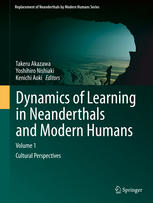

Most ebook files are in PDF format, so you can easily read them using various software such as Foxit Reader or directly on the Google Chrome browser.
Some ebook files are released by publishers in other formats such as .awz, .mobi, .epub, .fb2, etc. You may need to install specific software to read these formats on mobile/PC, such as Calibre.
Please read the tutorial at this link: https://ebookbell.com/faq
We offer FREE conversion to the popular formats you request; however, this may take some time. Therefore, right after payment, please email us, and we will try to provide the service as quickly as possible.
For some exceptional file formats or broken links (if any), please refrain from opening any disputes. Instead, email us first, and we will try to assist within a maximum of 6 hours.
EbookBell Team

0.0
0 reviewsThis volume presents the first of two proceedings from the International Conference on the Replacement of Neanderthals by Modern Humans, which took place in Tokyo in November 2012. Focussing on a highly innovative working hypothesis called the ‘learning hypothesis’, which attempts to explain the replacement as a result of differences in the learning abilities of these two hominid populations, the conference served as the latest multidisciplinary discussion forum on this intriguing Palaeoanthropological issue. The present volume reports on outcomes of the conference in three major sections. Part 1 provides an archaeological overview of the processes of replacement/assimilation of Neanderthals by modern humans. Part 2 consists of archaeological and ethnographic case studies exploring evidence of learning behaviours in prehistoric and modern hunter-gatherer societies. Part 3 presents a collection of papers that directly contributes to the definition, validation and testing of the learning hypothesis in terms of population biology and evolutionary theory. A total of 18 papers in this volume make available to readers unique cultural perspectives on mechanisms of the replacement/assimilation of Neanderthals by modern humans and suggested relationships between these mechanisms and different learning strategies.